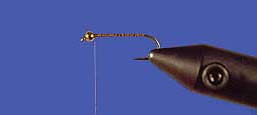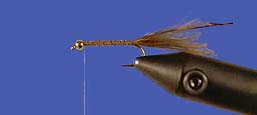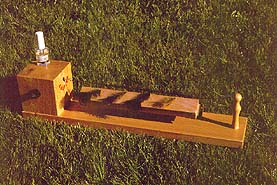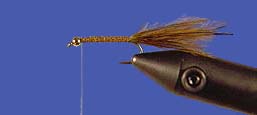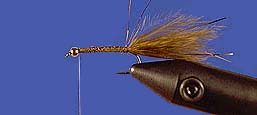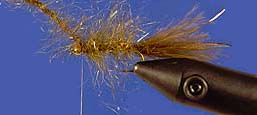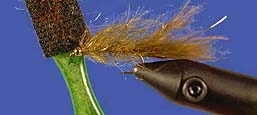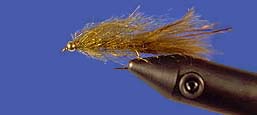|
|
|
List of BC Adventure Advertisers Site Info
Advertise With UsAwards About Us Contact Us  Kayak with Killer Whales Free Vacation Guides
BC Vacation GuidesCoastal Vacations Thompson Okanagan EcoTourism Fishing Vacations Guest Ranch Guide Romantic Getaways Wilderness Vacations Winter Vacations The Rockies Guide 
Coastal Spirits Expeditions Login |
It was late fall, foraging trout were tight to shore, stuffing themselves in anticipation the up coming winter. Reflecting upon his 30 plus years of fly-fishing the interior lakes good friend and guide Gord Honey knew this spot well. We anchored so close to shore there was barely enough water to float the boat. About thirty feet in front of us lay a shallow trench, a trout highway of sorts. Through this gateway, pods of trout patrolled the rich shoreline weed beds in search of scuds, immature damsels, leeches and dragons. Everything was on the menu.
Rigging up our dry lines we lengthened our leaders to fifteen feet. Since the onset of frost the water had cleared up considerably. The fall clarity coupled with shallow water made for spooky fish. Gord knotted on his new fall favorite, a Damsel Leech Thing or DLT for short. Without effort Gord fired his line out almost to the backing knot. Allowing it to sink for a brief second he began an almost chironomid paced hand twist retrieve. Under the slight breeze a slight bow formed about half way up his fly line. Two thirds of the way through his retrieve the bow straightened, Gord recognized the cause immediately and lifted his rod to set the hook. The water erupted and things became interesting as the trout bolted left and right instinctively in search of deep water, debris or weeds, using all of its instincts in an attempt to throw the fly. Gord was equal to the task and soon we had the trout resting beside the boat. She was magnificent, polished chrome and we estimated her to be at least six pounds. Gord repeated this scene a number of times including a number of fish taken on the drop as the fly settled after a cast. After an hour of this abuse I couldn't take it any longer, I stripped my line in and tied on my own D.L.T.
Over the past years, Gord noticed that during the fall months trout feed heavily on immature damsels and leeches. Based upon his observations he began searching for a simple design. After a short time Gord put two and two together and amalgamated this trout fetish into one pattern, the Damsel Leech Thing. Wanting to keep the overall pattern size small a #10 2XL hook such as the Mustad 9671 or Tiemco 5262 served as the foundation. After sliding a small gold bead onto the hook Gord added a tail of dark olive marabou mixed with a few strands of gold Flashabou for added shimmer. A blend of equal parts of golden olive and peacock Simi Seal formed the brushed out dubbed body. To muddy the pattern slightly Gord tossed in a pinch of medium brown dubbing. Instead of using a traditional thread dubbing loop Gord substituted a loop of fine copper wire. Happy with his concept Gord took the body a step further by making his own dubbing brushes using a dubbing machine he fashioned out of an electric drill. Making wire-dubbing brushes makes sense not only from a durability perspective but from one of tying speed too. Recently, Roots Fly Tying Products have begun marketing their own dubbing machine that spins dubbing brushes out at an alarming rate. The possibilities of this machine are endless and I encourage any tyer to give their machine serious consideration. I have had so much fun with my own machine that at times tying a fly seemed secondary.
In addition to the floating line and long leader combination Gord has started using a 5-7 foot section of clear intermediate sinking leader looped to the end of his floating line. These leaders are available through Airflo or Rio. To the end of the intermediate leader Gord adds 5 feet of tippet. This set up sinks at a perfect rate and casts like a dream. No matter what the set up, the retrieve is the same, a creepy crawly hand twist. Takes can be subtle or savage. It just depends upon the mood of the fish. The DLT is a fly for all seasons but steps up to the plate during the cool crisp days of fall. On so many of our interior lakes damsels and or leeches are a preferred food source. The DLT is a simple durable design created with this preference in mind. The Frostbite Bloodworm
|
 Follow Us On Facebook Articles Fishing VancouverPhils Flybox
Bill's Big RedDunc's Floating Carey Frostbite Bloodworm Glenn's Leech Marabou Prawn Pearl Shrimp Silly Creek Saviour The Black Sally The Clouser Minnow The Collaborator The Damsel Leech Thing The Epoxy Minnow The Popsicle Stillwater Fly Tactics
Chironomid TipsDamsels Leeches Looking For Clues Scuds Writers:
Peter Caverhill Brian Chan Fred & Ann Curtis Ian Forbes Geoff Hobson Gordon Honey Steve Kaye Fred's Custom Tackle Ron Newman D. C. Reid Philip Rowley Barry Thornton |
|||||||||||||||||
|
|||||||||||||||||||

